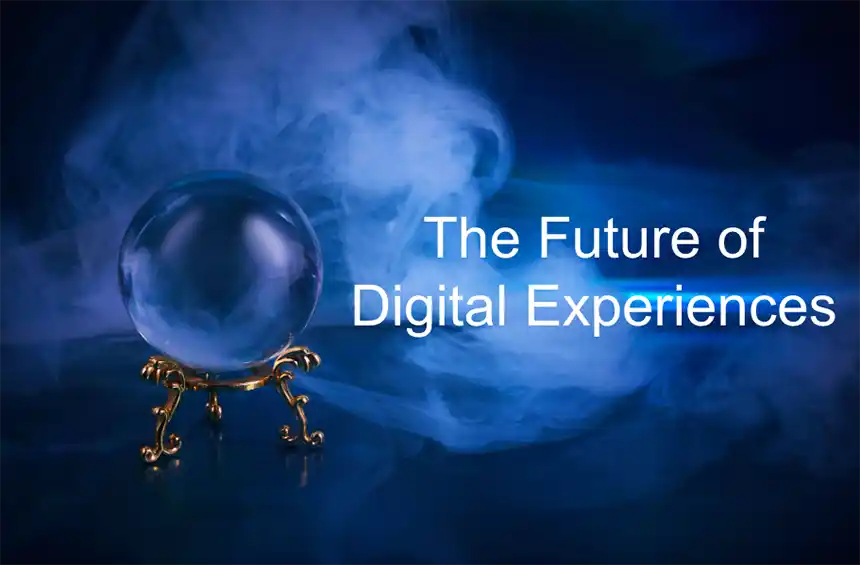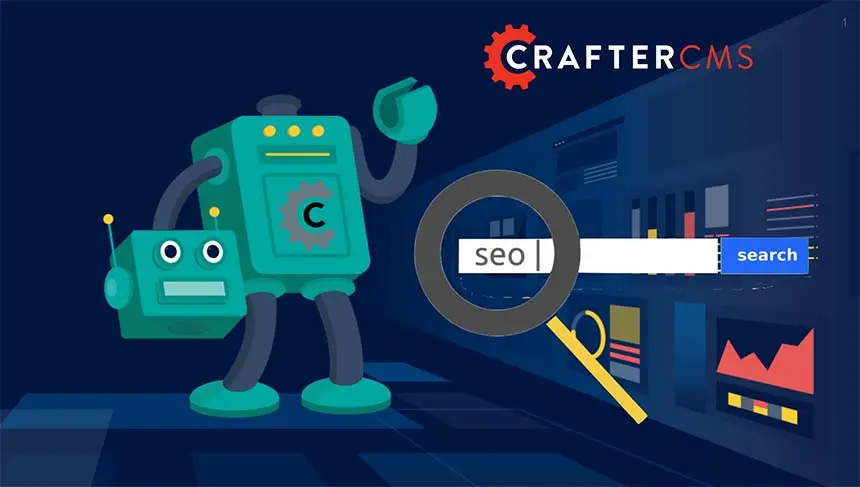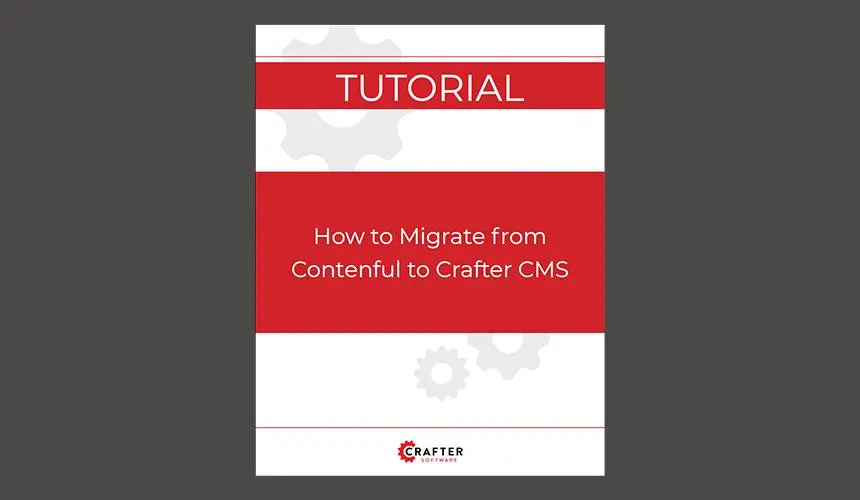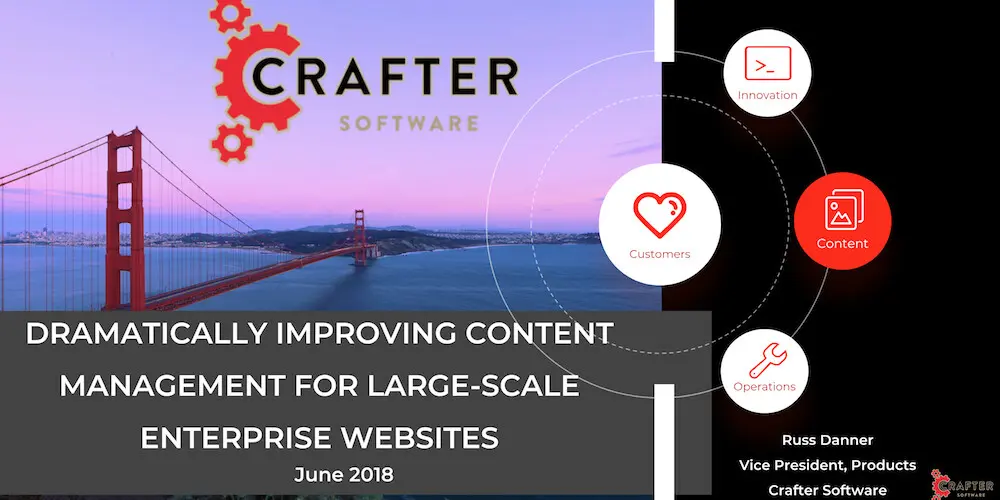Enhanced Security With a Decoupled Headless CMS

Amanda Lee

Security and privacy are high-priority concerns for most enterprises, and especially those in highly regulated industries. In June 2023, when various .gov websites, including universities and official websites of multiple U.S. state, county, and local governments were hacked. And it came due to hackers exploiting a flaw in online forms and a legacy content management system (CMS).
Meanwhile, millions of patients at Premier Health had their personal information impacted when a data breach occurred in May 2023. While data breaches can occur at any company, businesses in highly regulated industries have unique requirements when it comes to security and privacy.
Between the variety of regulatory frameworks dictating what to do with customer data, compliance requirements, and the expectations of their customers, the need for enhanced privacy and security measures is paramount. A headless CMS that provides robust security is essential for achieving organizational goals and can help companies alleviate data privacy concerns. However, many simple headless CMSs do not provide adequate enterprise-grade security.
In this blog post, we’ll explain how a truly decoupled, enterprise-grade headless CMS can address those concerns. We’ll touch on:
- The data privacy challenges facing highly regulated industries
- Why a decoupled headless CMS solves these challenges
- Features to look for when assessing a secure CMS
- How to achieve regulatory compliance with a decoupled headless CMS
- Best practices for maximum security benefits
- What makes CrafterCMS the ideal platform for enterprises that need extra security
The Data Privacy and Security Challenges in Highly Regulated Industries
Few sectors face as many regulatory intricacies and data privacy challenges as highly regulated industries. The need for stringent compliance with data protection regulations is non-negotiable from healthcare to finance and from legal to government sectors. Yet those are only a few challenges facing these types of organizations.
The Regulatory Framework Tapestry
Highly regulated industries operate within a complex regulatory framework, with standards that vary widely across sectors and geographies. Some of the most notable frameworks include:
- HIPAA: Established in 1996, the Health Information Portability and Accountability Act (HIPAA) was designed to safeguard personal health information. The Privacy Rule defines what organizations are covered, what information is protected, and rules for permitted use and disclosure. The rule also limits how personal medical information can be used and defines penalties for violations, from $100 to $50,000 per violation.
- GDPR: Implemented on May 25th, 2018, the General Data Protection Regulation (GDPR) brought about significant alterations in the collection and management of online user data. Any enterprise engaging with European Union (EU) citizens is obligated to comply with GDPR to avoid facing fines. According to GDPR, gathering data from EU citizens necessitates their explicit consent, and that data must be executed with due diligence to ensure safety and security, guarding against unauthorized use or accidental loss.
- CCPA: Enforced from January 1st, 2020, the California Consumer Privacy Act (CCPA) mandates that businesses regulate the collection, utilization, and safeguarding of personal data from customers. This encompasses the formulation of privacy notices, terms of service, and data processing policies. While CCPA exclusively applies to customers in California, non-compliance carries substantial consequences and significant ramifications for businesses.
- GLBA: The Gramm-Leach-Bliley Act mandates that financial institutions, encompassing entities providing consumers with financial products or services such as loans, financial advice, or insurance, must explain their information-sharing practices to customers. Additionally, they are obligated to safeguard sensitive data.
Consequences of Non-Compliance
The reason for many regulatory frameworks is to ensure the safety of consumer data. However, non-compliance with any regulatory framework can lead to various consequences for enterprises, including:
- Financial Losses: Monetary fines are the most common consequence of non-compliance and will vary based on the extent of the violation. For example, Meta received a $1.3 billion fine from the Irish Data Protection Commission (DPC) in 2023. Aside from financial penalties, there are also financial losses that may occur due to business disruption.
- Reputational Damage: With any failure to comply with regulations, enterprises need to contend with the damage to their reputation. Customers may view businesses differently and lose trust if they don’t feel their data is safe.
- Risk of Legal Action: Non-compliance may result in legal action, including lawsuits filed by affected parties or enforcement actions initiated by regulatory authorities.
Security Risks Plaguing Businesses
Along with numerous regulatory and compliance challenges, businesses in highly regulated industries also face various security risks, which explains why having a CMS with robust security measures is essential.
Everything from ransomware and spyware to phishing attacks and data hacks can threaten the security of customer data. Additionally, internal issues such as improper data handling and weak passwords are negligent issues that can harm enterprises. In addition, deliberate or accidental actions, such as falling victim to phishing attacks, can be detrimental.
Important Security Measures
Along with complying with various frameworks, enterprises must implement different security protocols and pass multiple assessments to ensure they meet required standards, including SOC2 and ISO 27001.
SOC 2, formulated by the American Institute of CPAs, is an assessment report gauging the efficacy of an organization, whether it’s a software provider or any other entity, in furnishing a secure operational environment safeguarding both the organization and client data privacy. Anchored in five fundamental criteria—security, availability, processing integrity, confidentiality, and privacy—SOC 2 reports delve into implementing internal data governance controls within an organization.
ISO 27001, also officially labeled as ISO/IEC 27001:2022, is an information security standard crafted by the International Organization for Standardization (ISO). It provides a framework and recommendations for the creation, execution, and administration of an information security management system (ISMS). In its documentation, ISO 27001 offers a structure for initiating, executing, overseeing, reviewing, sustaining, and enhancing an information security management system.
Why a Decoupled Headless CMS
Organizations using a traditional or legacy CMS will likely be susceptible to numerous data privacy and security risks. With a decoupled headless CMS, not only can many of those issues be alleviated, but there are other benefits as well.
Headless Architecture Security Benefits
A headless CMS separates the frontend presentation layer from the backend content management database. This separation helps businesses in highly regulated industries avoid severe data breaches. Unlike traditional CMSs like WordPress, if a hacker can access a public-facing website that uses a headless CMS, that doesn’t mean they will be automatically able to access private enterprise systems in the backend.
Truly Decoupled CMS Benefits
Headless CMSs separate the backend content repository from the frontend user interface, which isn’t a fully decoupled architecture. To achieve true decoupling, it is essential to separate the content authoring system from the content delivery engine.
For example, CrafterCMS offers a decoupled CMS where Crafter Studio’s content authoring tools are separated from Crafter Engine’s content delivery system. This true decoupling provides increased reliability, scalability, and security for businesses that adopt it.
Omnichannel Content Delivery
The headless CMS’s multipurpose capabilities also make it a crucial tool for businesses that want to provide omnichannel content delivery. They can publish content to corporate websites, mobile apps, in-store digital kiosks, ecommerce stores, and other channels while providing a seamlessly connected experience to customers, allowing them to move from channel to channel without a reduction in service.
Tech Stack Foundation
Additionally, a headless can help organizations to build the foundation for their new tech stack. While the CMS manages content experiences, companies can connect analytics systems, ecommerce tools, experimentation tools, and others via API. This unification helps to eliminate data silos and allows enterprises to build a robust security environment. =
Critical Security Features in a Truly Decoupled Headless CMS
Headless and decoupled architectures can provide several advantages for businesses in highly regulated industries. However, these architectures alone aren’t enough to guarantee the security of sensitive data and maintain customer privacy. Instead, enterprises should look for CMSs that offer these capabilities:
- Identity and Access Management: Identity and access management protocols, such as roles and permissions settings, control who has access to the system and what actions they can perform. Content managers using the CMS daily will have higher permissions settings than freelance contributors who only need to upload assets to the CMS once per month.
- Authentication Protocols: Robust authentication protocols such as two-factor authentication (2FA) or multi-factor authentication (MFA) offer an extra layer of security and are critical to ensuring that no unauthorized users can access the CMS.
- Encryption Strategies: Encryption strategies help secure data in transit between the CMS and other systems using protocols like secure socket layer (SSL) or transport layer security (TLS). This helps ensure the confidentiality and integrity of data.
- Secure APIs: APIs are a fundamental component of any headless CMS, whether REST APIs or GraphQL. Ensuring APIs are secure prevents unauthorized access or data breaches.
- OAuth and JWT Authentication: OAuth is an authorization framework, and JWT (JSON Web Tokens) is a compact, URL-safe means of representing claims to be transferred between two parties. Protocols such as these provide a secure and standardized way for users to grant limited access to the CMS without exposing credentials.
- Audit and Access Logs: Auditing and access logs record activities within the system, helping to track who did what and when. In the case of a Git-based CMS, such as CrafterCMS, enterprises can leverage Git’s version control capabilities to provide auditing capabilities.
Achieving Regulatory Compliance with a Decoupled Headless CMS
Companies operating in highly regulated industries such as healthcare and financial services must follow continually changing regulatory requirements. With a decoupled headless CMS, it is possible to implement compliance procedures and content operations to manage these requirements.
HIPAA Compliance and Safeguarding Patient Data
Healthcare organizations need ways to comply with HIPAA regulations and safeguard patient data. A headless CMS can enable strict control over access to patient data by implementing robust identity and access management.
GDPR Compliance
GDPR focuses on protecting the privacy and rights of individuals regarding their personal data. A headless CMS can facilitate compliance through features like data minimization so that organizations only collect and process the necessary personal data from customers.
Consent Management and Right to Access and Erasure
Consent management means getting customers’ consent to collect and use their personal data. As regulatory requirements increase, the need for consent management increases.
While businesses often rely on a consent management platform (CMP) to help manage consent and customer data, a headless CMS can facilitate handling user requests for access to their data or deletion and clearly communicate the need for and benefits of consent. It can also integrate with a CMP to ensure organizations have a connected view of all data.
Industry-Agnostic Considerations
The flexibility of a headless CMS allows organizations to adapt to industry-specific regulations and standards, ensuring compliance with specific requirements relevant to their sector. However, it also provides the capabilities to aid compliance measures regardless of the industry:
- Workflows: Effective workflows help to prevent silos that separate compliance from other departments, such as communications, product development, and marketing. Internal teams can also review materials before publication to ensure compliance and accuracy.
- Omnichannel Publishing: Companies can communicate relevant information to customers no matter the channel where they prefer to view content.
- Flexibility: A headless CMS offers the flexibility to deal with changing compliance requirements so that companies can adopt new technologies or publish to new channels.
- Modern Technologies: Capabilities such as artificial intelligence offered by some headless CMSs can help process information faster and improve decision-making.
- Source of Truth: A headless CMS can be the single source of truth for all content and data assets. Enterprises in highly regulated industries can know which document version is the most current and compare it to previous versions for accuracy.
Best Practices for Maximum Security and Compliance
With the assortment of content management systems available for enterprises, it can be challenging to identify the right one for your organization. However, these best practices will help you to pinpoint the best CMS to maximize security and compliance.
1. Assess CMS architecture
The first step in finding a secure CMS is to assess the architecture. While traditional and legacy CMSs remain popular, a headless or decoupled CMS offers a more robust and flexible option for businesses that want to maintain security.
If the architecture is not only headless (separating the frontend presentation layer from the backend content repository) but truly decoupled, thus separating the content authoring from the content delivery, this provides added security benefits.
2. Review vendor auditing and security testing capabilities
Each CMS vendor will have different protocols and practices to conduct security audits and tests. Regular auditing and security testing help identify vulnerabilities and ensure ongoing security compliance. By reviewing past security assessments and audits, as well as assessing the frequency and depth of any security tests conducted, it is possible to understand how seriously the particular vendor takes security for customers.
Additionally, enterprises should look for robust security-focused features such as roles and permissions, multi-factor authentication, single sign-on, and security and compliance certifications such as ISO 27001 and SOC2.
3. Evaluate the software hosting and cloud operations
Some companies may currently be operating using CMS hosted on-premises. However, when selecting a secure CMS, evaluating whether a vendor offers a cloud-native SaaS CMS or a PaaS or private SaaS option is crucial for optimizing operations and spending. For companies in highly regulated environments, a private cloud option may be required to comply with various regulatory constraints.
4. Select the ideal CMS partner
The underlying architecture, security assessments, and cloud capabilities of a CMS are the bare minimum to determine if it’s the right fit for your business. However, to select the ideal CMS partner, it will be necessary to assess the other features (such as content authoring and SEO capabilities), the budget, and how easily the platform integrates with other systems in the existing tech stack.
CrafterCMS: A Truly Decoupled CMS Built for Security
Security is a critical subject for companies that operate in highly regulated industries. While every organization needs to consider the privacy of their customers, those in industries such as healthcare and financial services need to consider strict regulatory frameworks, a variety of security threats, and the consequences of not adhering to compliance requirements.
Enterprises such as these searching for a content management system that offers robust security and data privacy features should look no further than CrafterCMS.
Headless Architecture
CrafterCMS is a headless CMS that enables enterprises to publish content to websites, mobile applications, ecommerce stores, digital signage, AR/VR devices, video on demand, and more. Additionally, developers can leverage CrafterCMS’ framework agnosticism to choose the best frontend frameworks to match their objectives without any restrictions.
Truly Decoupled
CrafterCMS embraces a truly decoupled architecture, distinguishing itself by the complete separation of the API-first content authoring platform and authoring app (Crafter Studio) from the API-first headless content delivery engine (Crafter Engine).
Unlike headless platforms that claim to be “decoupled” merely by separating the end-user UI from the content repository, CrafterCMS goes beyond, offering enhanced security, reliability, performance, and scalability advantages.
Private SaaS
CrafterCMS offers unparalleled flexibility by supporting deployment options on-premises and in private or public clouds. Crafter Cloud is a fully managed private SaaS/PaaS solution, leveraging AWS infrastructure to provide enterprises with an agile, cost-effective, high-performance, and secure CMS tailored for enterprise needs.
This private SaaS offering enables organizations in highly-regulated environments who want to maintain complete control over the infrastructure and data to leverage the benefits of the cloud while remaining secure.
Composability
CrafterCMS is built on a composable architecture, allowing businesses to tailor their systems and promptly address shifts in market conditions, economic landscapes, and customer requirements.
Open Source
Opting for open source brings numerous enduring benefits compared to proprietary CMS alternatives. CrafterCMS users and customers enjoy a larger community, a more transparent and thus more secure platform, and a significantly more cost-effective investment.
Security Assessment Processes
CrafterCMS follows detailed security assessment processes, including regular audits and vulnerability checks, and continually mitigates against the top security threats outlined by OWASP.
On top of offering disaster recovery and backup capabilities, CrafterCMS proudly collaborates with the CVE Program, a premier consortium of experts dedicated to identifying, describing, and cataloging publicly disclosed vulnerabilities.
Functioning as a CVE Number Authority (CNA), CrafterCMS is authorized to assign CVE IDs to vulnerabilities and responsibly disclose CVE records for its open-source project, prioritizing a secure approach that mitigates the risk of exploitation.
Secure Content Authoring
CrafterCMS offers WYSIWYG authoring, drag-and-drop experience building, in-context previews across various digital channels, and other features. Crafter Studio, the content authoring experience, encompasses everything modern content teams need, and its extensibility empowers enterprise businesses to effortlessly tailor the authoring experience to their specific requirements. With a content authoring system decoupled from delivery, the risk of instrusion is dramatically reduced.
DevContentOps
CrafterCMS introduces the advantages of DevSecOps to content-driven applications, products, and digital experiences by incorporating distinctive support for DevContentOps processes. In this framework, for instance, code seamlessly transitions from development to production environments, while content reciprocally moves from production to development through straightforward push and pull operations.
Using DevContentOps teams can implement secure workflows and automate content approvals. This helps teams move quickly without compromising the security of their data. By implementing DevContentOps, teams responsible for content and software development can efficiently collaborate, enabling the timely release of new content updates and software features and the delivery of captivating customer experiences—eliminating the delays and security concerns commonly associated with other database-oriented headless and traditional CMSs.
Learn More
Interested in finding out more about CrafterCMS? Sign up for a trial to test it out and then contact us for more details.
Related Posts

Navigating the Future of Digital Experiences: A Deep Dive into Emerging Trends

Amanda Jones

CrafterCMS Wins More G2 Awards Spring 2024

Amanda Lee

Headless CMS SEO (How to Do SEO Right With a Headless CMS)

Amanda Jones

The Future of CMS (and Overcoming Problems in Content Management)

Sara Williams
Related Resources
-

Personalized Digital Experiences for a Cruise Liner
Webcast
-

How to Migrate from Contentful to CrafterCMS
Tutorial
-

Marriott: Streaming Enterprise Video in the Hybrid Cloud
Case Study
-

Dramatically Improving Content Management for Large-Scale Enterprise Websites
Webcast
-

Modernizing Customer Experience for Financial Services
Webcast





